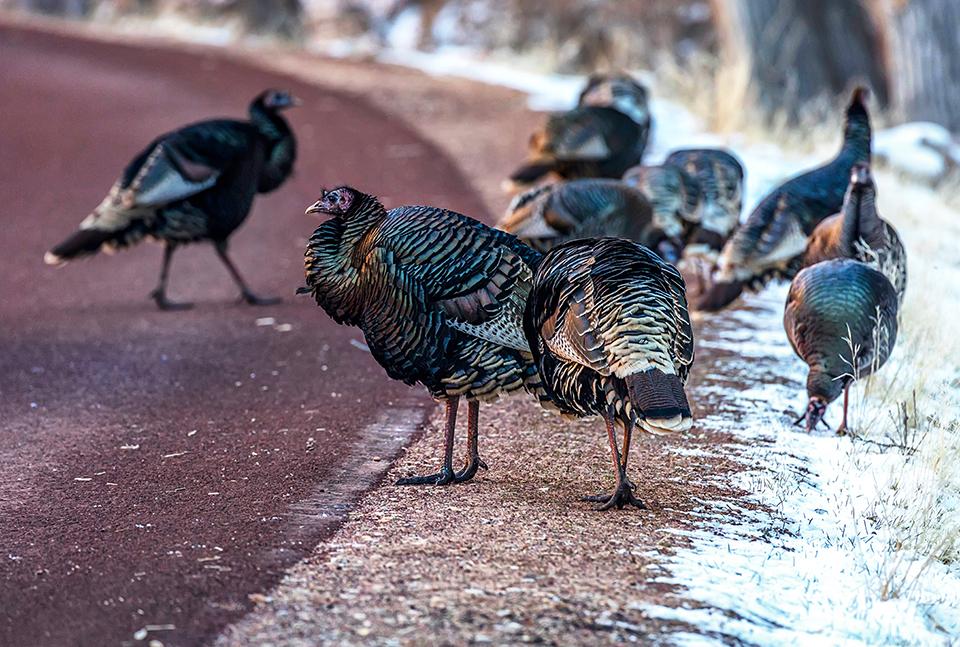
A rafter (aka flock) of wild turkeys, Zion National Park / Rebecca Latson
Over the years, five national parks were established during the month of November. See how much you know about Badlands, Congaree, Theodore Roosevelt, Arches, and Zion national parks before checking the answers at the bottom.
1. True or False: Kolob Arch, located in Zion’s Kolob Canyon District, is the world’s largest span, in terms of width and size.
a) True
b) False
2. Hiking along the lower elevations of Zion National Park, especially around the Court of the Patriarchs area, you might come across a rafter (aka flock) of wild turkeys. Despite their grizzled faces, they are a colorful bird with beautiful feathers. Wild turkeys are one of ____ species of birds found in this park.
a) 300
b) 153
c) 291
d) 313
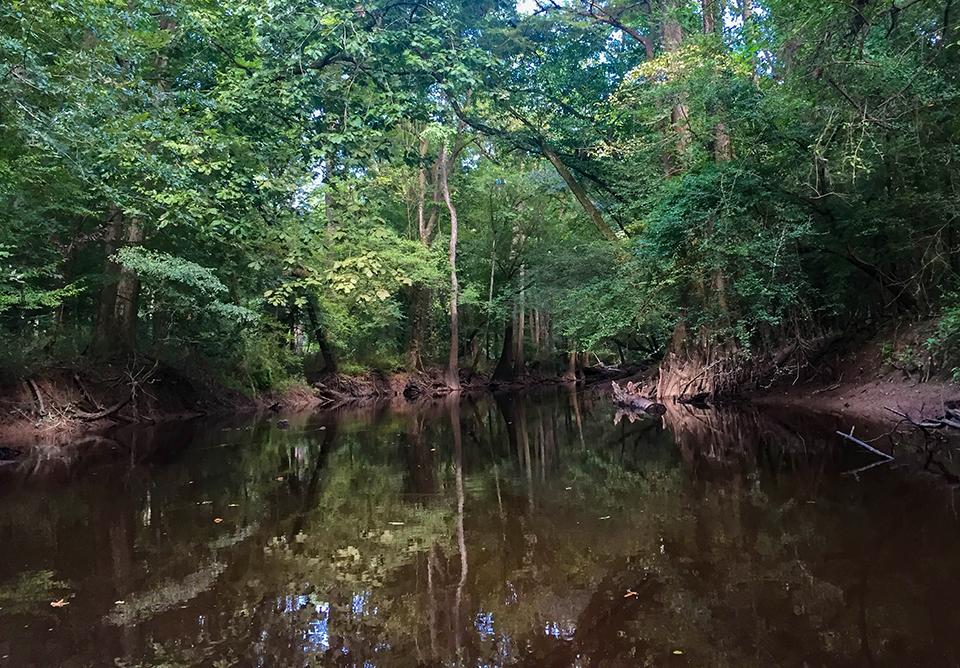
A tree-lined creek in Congaree National Park / NPS - Victoria Stauffenberg
3. True or False: Congaree National Park is home to the second largest intact expanse of old growth bottomland hardwood forest remaining in the southeastern United States.
a) True
b) False
4. Archaeological evidence found at Congaree National Park suggests humans have inhabited this area for at least ____ years.
a) 10,000 years
b) 2,000 years
c) 6,000 years
d) 1,500 years
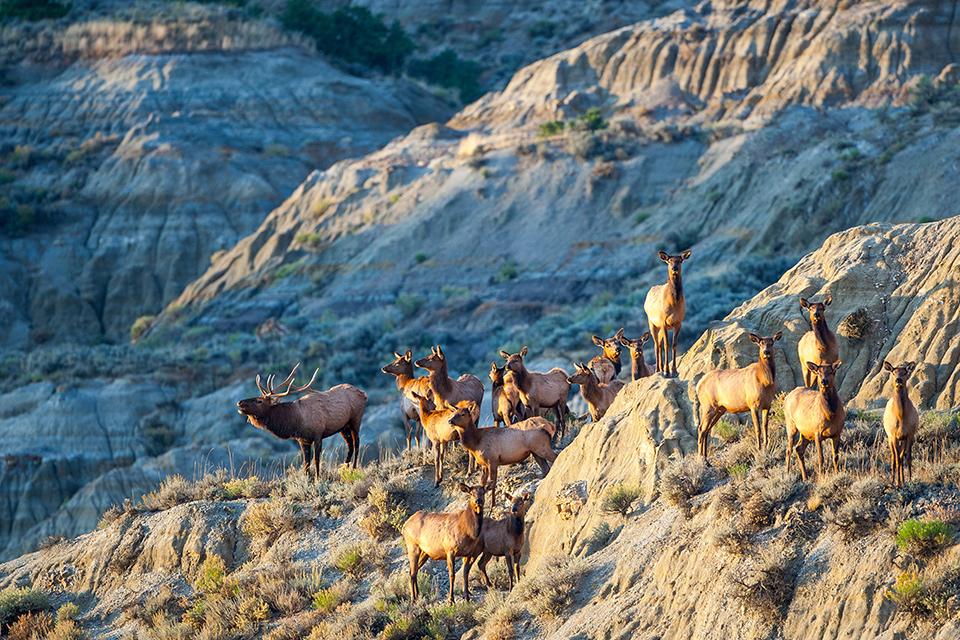
A bull elk's fall harem, Theodore Roosevelt National Park / NPS - Rolan Honeyman
5. True or False: In addition to seeing bison, elk, and prairie dogs, you can even view longhorn steers in Theodore Roosevelt National Park.
a) True
b) False
6. Like many other national parks, Theodore Roosevelt National Park is under attack by various nonnative plants that threaten to supplant the native vegetation. Over ____ species of exotic plants have found their way into the park.
a) 35
b) 42
c) 60
d) 77
7. True or False: Badlands National Park is located in an ecological area known as a tall-grass prairie.
a) True
b) False
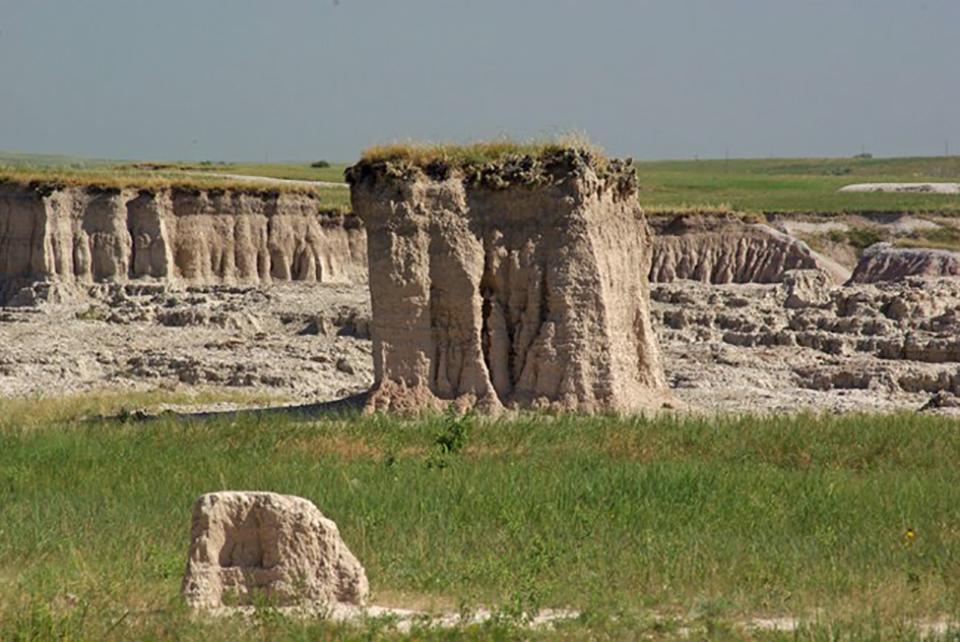
What is this feature called? Badlands National Park / National Park Service
8. Throughout the Badlands are broken sections of grass and soil that sit on top of badlands material, like the image you see above. These features are known as ______.
a) Mesas
b) Sod tables
c) Buttes
d) Prairie columns

Honeycomb weathering by any other name ... Arches National Park / National Park Service
9. Arches lies near the heart of a desert called the “Colorado Plateau.” This means you’ll find interesting features found in arid and semi-arid desert environments, like the image above of a rock with honeycomb weathering. This feature is found in granular rock such as sandstone or sandy limestone, and is also known as:
a) Tafoni
b) Spider webbing
c) Differential weathering
d) Basal weathering
10. There are approximately seven species of amphibian in Arches National Park. This count includes one salamander known as the ____.
a) Red salamander
b) Tiger salamander
c) Crystal salamander
d) Sierra newt
Trivia
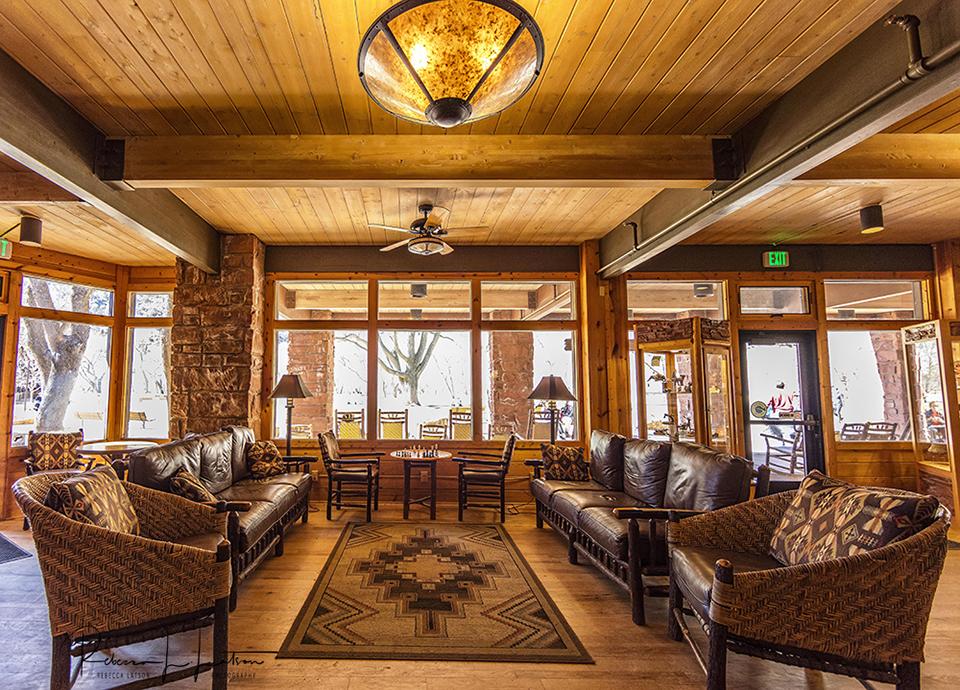
A view in the Zion Lodge lobby, Zion National Park / Rebecca Latson
“In the early days of the National Park Service, railroad companies were often the catalyst for the creation or improvement of park accommodations. For Zion, that railroad was the Utah Parks Company, a subsidiary of the Union Pacific Railroad. With the completion of a railroad spur line to nearby Cedar City in 1923, visitors had an easy and comfortable way to get to Zion. The next step was to provide lodging that complemented the world-class scenery.
While initial designs of the lodge called for enormity and immensity, park officials ultimately determined that a lodge in the narrow canyon should better harmonize with the landscape and scale of the surroundings. Gilbert Stanley Underwood – a frequent architect of numerous national park lodges – was up to the challenge. Using 265,000 board feet of lumber brought down from the plateau by the Cable Mountain Draw Works, the Utah Parks Company designed a main lodge building that was inviting and exuded warmth. The Zion Lodge was completed in May of 1925, and was later complimented with a series of stand-alone cabins nestled nearby. These improvements signaled an important milestone in a visit to Zion National Park.
The main lodge building stood for over 40 years until it was consumed by a fire on January 26, 1966. A mere 108 days after the fire, a new prefabricated building was up and operating. This quick turn-around speaks volumes about the significance that the Zion Lodge had garnered in the story of Zion National Park.”
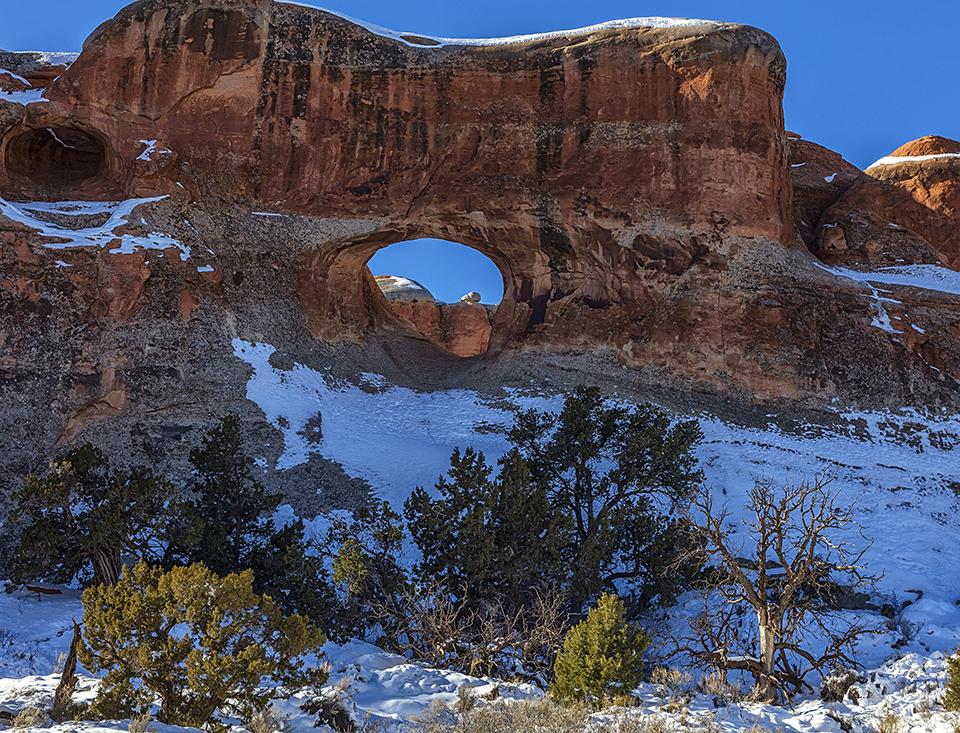
A look through Tunnel Arch, Arches National Park / Rebecca Latson
“Finding arches in this fractured landscape isn't as easy as it might sound. As recently as 1970, official literature stated that the park contained ‘nearly 90 arches,’ which is less than 0.05% of the current known total. It took a group of dedicated, curious "arch-hunters" to establish a scientific protocol for surveying the park and documenting its over 2,000 namesake features.
Dale Stevens, a geography professor, conducted the first scientific study of arches in the park beginning in 1973. He and his team developed a standardized method for measuring and recording arches. Ed McCarrick was a ranger at Arches in the 1970s and 1980s, and he, along with Stevens and Chris Moore, authored several books on the arches they documented. Doug Travers and his sons developed their own database for arches they located, while many others were found by Reuben Scolnik and Steve Frederick.”
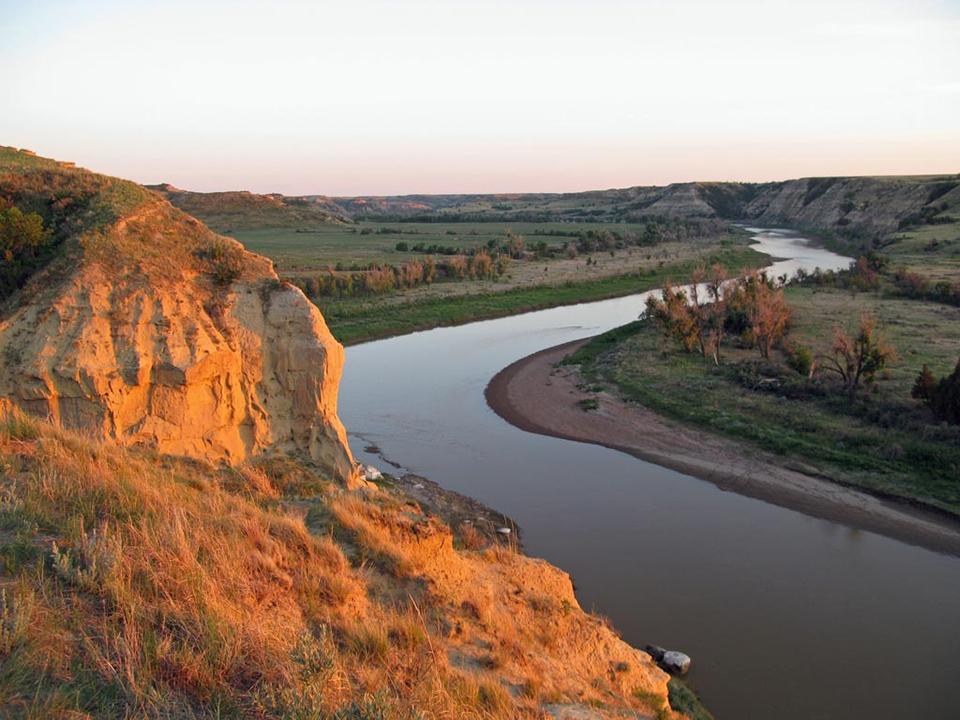
A view of the Little Missouri River at Wind Canyon Overlook, Theodore Roosevelt National Park / National Park Service
“Although glaciers are not to be found in Theodore Roosevelt National Park, the evidence of their geologically recent presence is throughout the park's landscape. During the Pleistocene Ice Age, tremendous ice sheets advanced from the north, redirecting the course of the Little Missouri River. Its new course caused the Little Missouri to carve more sharply into the soft sedimentary rock in the badlands, creating much of the broken topography found throughout the park.”
Quiz Answers
1b False
“For most of the twentieth century many believed that Kolob was in fact the world’s largest freestanding arch, leading to years of debate and the motivation for various parties of adventurous thrill seekers to climb on and around the massive span in hopes of securing a defensible measurement … Most experts now agree that Kolob Arch is not the world’s largest span in terms of measurement by width and size.”
2c
There are 291 species of birds found in Zion National Park. To learn more about the birds of this park, click here.
3b False
Actually, Congaree National Park is home to the largest intact expanse of old growth bottomland hardwood forest remaining in the southeastern United States. To learn more about the bottomland region, click here.
4a
“Archaeological evidence suggests humans have inhabited this area for at least 10,000 years. These earliest people were nomads, living in temporary camps while following the large mammals they relied upon for food and gathering whatever else they needed. Over time these nomadic groups formed small tribes, built more permanent villages, and experimented with crops and pottery. The introduction of corn, beans, and squash led to the eventual unification of these many small tribes into large chiefdoms with large territories. It was these people that met the Spanish led by Hernando de Soto in April of 1541."-- National Park Service
5a True
That’s right, you can see bison, elk, prairie dogs, and longhorn steers in Theodore Roosevelt National Park. The park maintains a small demonstration herd of longhorns in the park’s North Unit. Many of the large mammals you see in the park today were virtually eliminated during the time of the park’s establishment in the 1940s. Various reintroduction programs returned the wildlife once native to the area. To learn more about the mammals found in the park, click here.
6c
Over 60 species of nonnative plants have found their way into Theodore Roosevelt National Park. Click here for a list of the plants of which the park is focusing its efforts on controlling as well as what you can do to help.
7b False
Badlands National Park lies in the ecological area known as mixed-grass prairie, a transition zone between the eastern tall-grass prairies and the western short-grass prairies. To learn more about Badlands mixed-grass prairies, click here.
8b
“Sod tables are the last traces of ancient prairies. At the end of the last ice age, the Badlands had a cooler and wetter climate. At that time, many sections of the park that today are exposed rock would have been covered by extensive prairies. As the environment slowly warmed and dried, erosion (caused by storms and flowing rivers) began to cut channels into these prairies. Once the protective layer of sod was removed, the rock beneath began quickly eroding away. In this way, the broad grasslands of the past became the isolated sod tables of today.” To learn more about sod tables, click here.
9a
Known as honeycomb weathering or "swiss-cheese rock," tafoni (singular: tafone) are small, rounded, smooth-edged openings in a rock surface, most often found in arid or semi-arid deserts. To learn more about this interesting type of weathering and where you might see it, click here.
10b
While all of these salamanders can be found in various national parks, the tiger salamander is the one salamander species found in Arches National Park.
References
Note: Different websites may have different national park establishment dates, so, I used this NPS publication as the standard.



Add comment